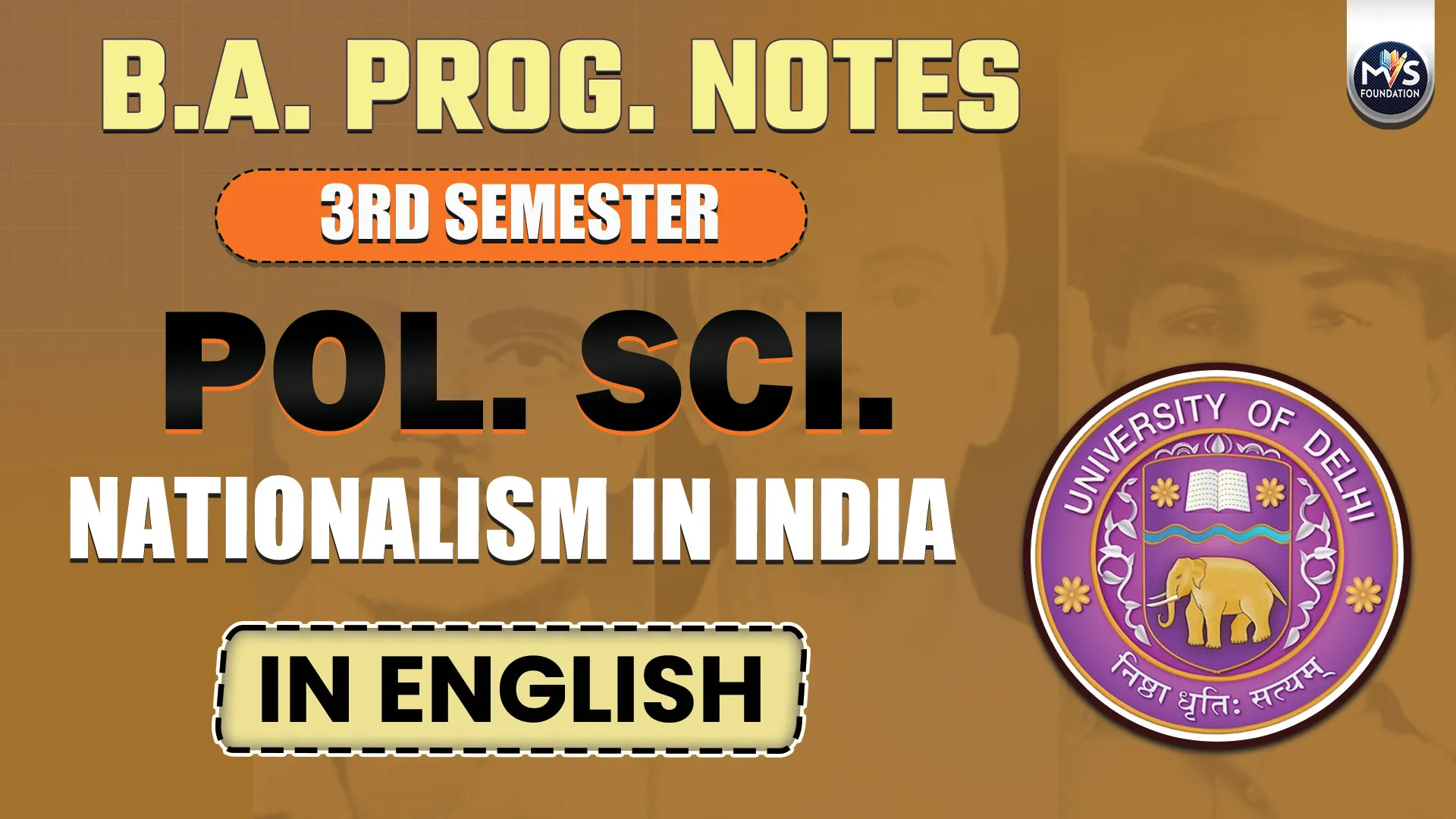
Get in Touch
We will get back to you within 24 hours.
Welcome to MVS Blog

Q1 - Analyse the Imperialist approaches to the study of Nationalism in India.
OR
Critically analyse the Nationalist approach to the study of Nationalism in India.
Answer -
Introduction
Nationalism in India arose in the 19th-20th century against British rule. It was not just a political reaction but an awareness against the exploitation of the people. Nationalism showed the way to unite Indian society and inspire social reform. Later, several approaches developed for the study of nationalism, among which the Imperialist Approach and the Nationalist Approach were prominent.
Meaning of Nationalism: The feeling among the people of a nation to unite and struggle for their political freedom, unity, and self-reliance. In India, this feeling developed against the exploitation of British rule and became the foundation of the freedom movement.
Imperialist Approach To The Study Of Nationalism In India:
The Imperialist approach is the view of British historians and rulers, which considers nationalism as a gift of British rule. According to them, Indian nationalism was the result of Western education and British reforms, not of Indian consciousness. This approach describes India as a non-nation, which was united because of the British.
1. Considering India as a non-nation- Imperialist historians like James Mill and John Strachey argued that before the 18th century, India was not a nation but a collection of different castes, languages, religions, and regions. According to them, British rule gave India the form of a nation by providing uniform administration, law, education system, and means of communication.
2. Nationalism limited to elites- The Imperialist view said that nationalism was only among the educated, English-speaking middle class. Lord Dufferin called the Indian National Congress "a handful of intellectuals," away from the problems and feelings of common people.
3. Downplaying the Revolt of 1857- This view called the 1857 revolt a "Sepoy Mutiny," saying it was only soldiers' discontent. They refused to consider it an organized national movement and completely denied its nationalist spirit.
4. Negative portrayal of nationalist leaders and movements - Imperialist historians called leaders like Bal Gangadhar Tilak "agitators" and described Gandhi's policies as weak. They argued that such leaders misused British reforms and that their activities were impractical and created instability in society.
Ultimately, the Imperialist approach sees nationalism entirely as a gift of British rule, but this view is biased, as it ignores Indian society's own political consciousness and desire for freedom.
Nationalist Approach to the Study of Nationalism in India:
The nationalist view is the view of Indian historians and leaders who believe that nationalism in India arose from the Indians' own thinking and desire for independence. According to them, nationalism in Indian developed naturally against the exploitation, injustice, and oppression of foreign rule, and not because of British reforms.
1. Emphasis on Unity in Ancient India- Nationalist historians like R.C. Majumdar and K.P. Jayaswal argued that national feeling existed in India through its cultural and political traditions. They believed that the spirit of freedom, unity, and self-reliance was present even before British rule, which was further strengthened by colonial oppression.
2. Focus on Exploitation under British Rule- The Nationalist approach sees British rule not as beneficial but as exploitative. According to it, the British weakened India's economic, social, and cultural structure. Agrarian crises, poverty, and industrial decline created discontent among the people, which ultimately became the basis of the nationalist movement.
3. Viewing the Freedom Struggle as a Mass Movement- this approach, the Revolt of 1857 is seen not merely as a "Sepoy Mutiny" but as the first organized national movement. Farmers, soldiers, artisans, and common people all participated in it. Nationalist historians regard it as the beginning of India's freedom struggle.
4. Positive Role of Leaders and Movements - The Nationalist approach considers the role of leaders like Mahatma Gandhi, Bal Gangadhar Tilak, Lala Lajpat Rai, and Subhas Chandra Bose as decisive. Under their leadership, the movements became mass-based, with contributions from Satyagraha, Non-Cooperation, Swadeshi, and armed revolution.
Criticism Of The Nationalist Approach
The Nationalist approach increased pride and patriotism among Indians. It showed how strong India's ancient unity, culture, and desire for freedom were. However, it also had some weaknesses. At times, this approach became too emotional and ignored certain positive administrative and technical contributions of British rule. The unity and national feeling of ancient India were sometimes exaggerated, while differences of caste, religion, and language also existed. Not all historians agree that 1857 was fully the First War of Independence. Moreover, the role of peasants, workers, and common people was not given enough importance. Therefore, this approach was inspiring but not completely balanced.
Conclusion
Thus, it can be said that both approaches view the rise of nationalism in India differently. The Imperialist approach considers nationalism as a gift of British rule, while the Nationalist approach sees it as the result of India's own strength and consciousness. The truth is that Indian nationalism emerged from a blend of both: the challenges of foreign rule along with internal unity together transformed it into the nationalist movement for independence.
0 Response